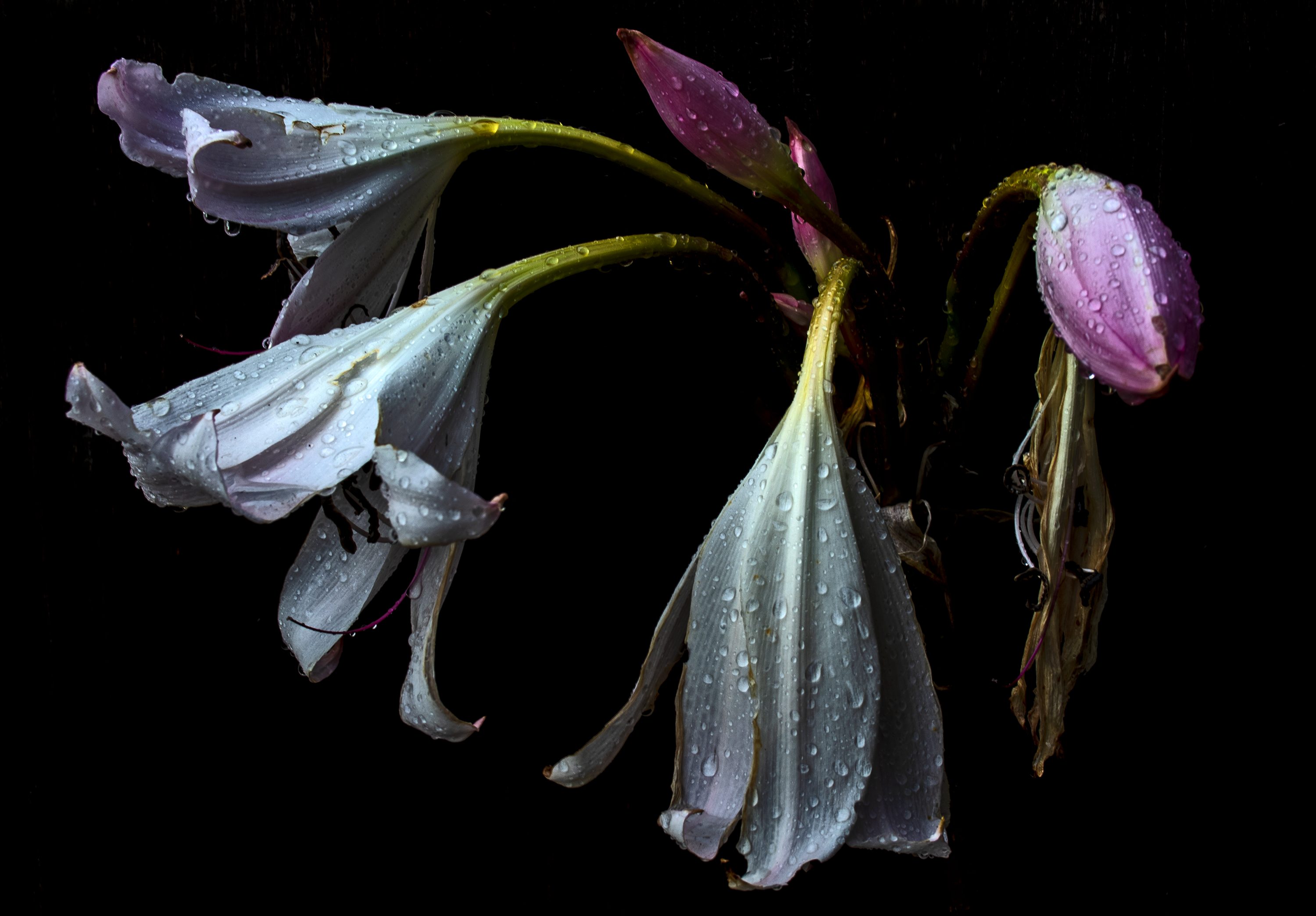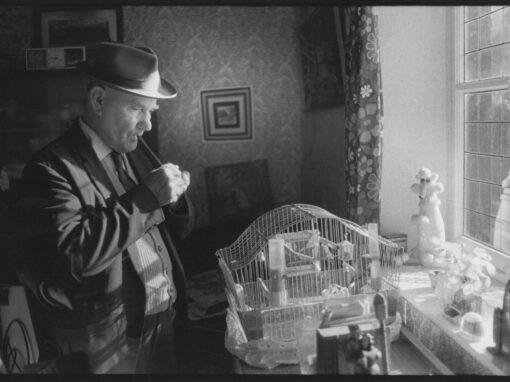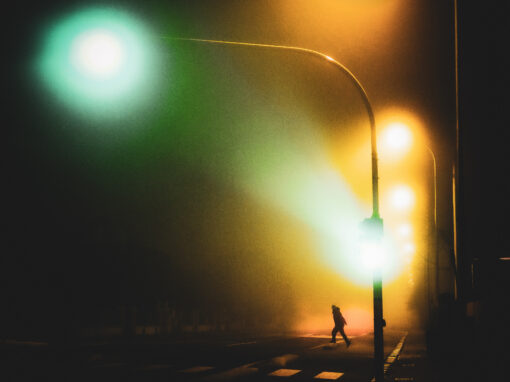The blooms are Amaryllis belladonna [aka Jersey lily, belladonna lily, naked lady lily, or March lily], absolutely my favourite blossoms. They grow in profusion on my sidewalk and are at their best in late summer here in Tasmania.
The background is a dark wooden fence – utterly black after watering. The chiaroscuro effect comes from using the lowest possible ISO and exposing manually for the lightest petals. Shot in early daylight – a polarizing filter saturates the colours and eliminates flare and glare on the petals.
I have been shooting these ‘naked lady’ lilies ever since I began using digital cameras in 2006, and every year I look forward to their sudden emergence, usually in late January.
In the field of floral art, I am a keen student of the work of Ernst Haas, Georgia O’Keeffe and Robert Mapplethorpe. I love the sensuality and tonal explorations they evoke from their subjects. In exploring such images, I have discovered that very low ISO and early morning light can produce evocative chiaroscuro tonality in which the blooms have a very sculptured appearance against the inky darkness.
In this image I am contrasting the fresh, unopened buds, pink with virility, with the pale, opened blooms and one that has started to droop and die — a full cycle of life. The water droplets on the buds and petals add to their sensual allure. I believe an apt title can define my approach to an image and direct the viewer to a point of departure for appreciating my intentions. ‘Yearning’ attributes emotion to the subjects. The ‘naked ladies’ awake, dance and die.
What do you think are the TWO most impactful features that make your image a good photograph? Don’t be shy!
An interesting, a-symmetrical composition of a very sculptural subject and emotive tonality.
If you would be able to make this photo once again, what would be the ONE thing you would like to do better or different?
The only change I might make would be to use an even smaller aperture – say f/11 or even f/16 – to extend the depth of field and get the blooms furthest from the camera even more in sharp focus. However, I seldom go beyond f/8 as diffraction can be a problem with the smallest apertures. That said, I have used the Voigtlander Nokton at the extremes of aperture – from f/0.95 right down to f/16 – as it is a great performer. It is one of my favourite lenses and also performs well with up to 26mm of extension tubes to get close to macro.
Giles Hugo shared this photograph in the FRAMES Facebook Group.
Photographer
Giles Hugo, Hobart, Tasmania, Australia
WIKIPEDIA
NOLAN GALLERY
IPA FEATURED MEMBER
TASMANIAN TIMES REVIEW
Equipment and Settings
Olympus OM-D/E-M1 Mark II, Voigtlander Nokton 25mm f/0.95, polarizing filter
Settings: f/8, 1/15 sec., ISO64
Outside daylight, hand-held.




